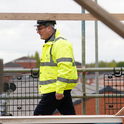The change from the “stay at home” to “stay alert” messaging on Covid-19 has caused much controversy. The original messaging also included “protect our NHS,” and thankfully the position in NHS hospitals is now steadily improving. But it is telling that the mantra was never “protect our care system.” Was much of the crisis in social care avoidable?
The latest data for social care is, as we know, deeply concerning. In England and Wales, figures show that over 8,300 care home residents have now died from Covid-19 and this is likely to be an underestimate. While the epidemic in the wider community peaked around early April, it continued to spread in care homes for almost another month. This was not unexpected. Italy, France and Spain, ahead of the UK in the pandemic, reported Covid-19 deaths in their care homes from the start.
Lockdown measures and changes to services intended to protect NHS capacity may have had unintended consequences for social care. In care homes, we are seeing a high level of excess deaths—around 20,000 more than one would expect for this time of year. New research from the LSE has estimated that care home residents may account for around half of total excess deaths this year in England and Wales. The 8,300 deaths directly linked to the virus explain around 40 per cent of the excess. But what of the other 60 per cent? These 12,000 additional deaths may reflect undiagnosed Covid-19, but there is also a risk that people with complex health and care needs may not be getting all the help required. As we ease lockdown, and the NHS attempts to expand its capacity for normal business, we need to ensure that those receiving social care are also receiving high quality NHS care.
Still hidden is the virus’ full impact on the more than half a million people receiving long-term social care support in their own homes. We now know there were 3,161 deaths of people receiving domiciliary care in England in April this year, over twice as high as the three-year average (1,171 deaths) for the same period. We also have anecdotes of services struggling to provide the same number of visits to vulnerable patients, and care workers without the PPE necessary to prevent transmission. But we still have no data to properly track and monitor the precise impact.
The toll taken on the social care workforce is becoming increasingly clear. Compared to those working in the NHS, their deaths have not received as much media coverage. But new figures from the Office for National Statistics show that social care workers have twice the rate of death due to Covid-19 compared to the general population and indeed to healthcare workers in general, for whom the death rate is no higher than the population at large. This is not to minimise the toll on NHS staff, and as more data becomes available this picture may change, but as things stand, working in social care is one of the highest risk occupations for Covid-19-related deaths, especially for women.
With every passing week, it is clear that those who use and work in the sector are bearing the brunt of the pandemic. Dealing with the virus in social care was always going to be very challenging; the sector is hugely fragmented, with thousands of organisations providing care. Around 70 per cent of care home residents have dementia, and infection control in what are people’s homes is much more difficult than in the controlled, clinical environment of a hospital. But those inherent challenges should have provided the imperative for a faster, better tailored and more effective response.
This week’s announcement of a further £600m of support is helpful but it’s vital that the money gets to the front line and the logistical problems with PPE and comprehensive testing are urgently resolved.
But years of underfunding and policy neglect have made a bad situation worse. In England, spending on adult social care per head of population is almost 10 per cent less than a decade ago in real terms, and the rates paid for both home and residential care are now below the cost of providing a decent quality service. Covid-19 has taken root in a sector with widespread staffing shortages, high turnover, large numbers of staff on zero hours contracts—and where just half the workers hold a relevant qualification in care.
Not only have we not invested in the workforce, we have not invested in the data and technology needed to understand and support the sector. Responding to coronavirus has often felt like flying blind. It took until 29th April for the daily press conference to include data on deaths from the community, including care homes. Relevant data is often being collected somewhere, but systems are fragmented, and information is not flowing as it needs to.
The government needs to think beyond the short-term. The crisis in social care almost certainly didn’t need to be this bad. We must build a resilient, fit-for-purpose system with a workforce that is better paid, truly valued and supported by a 21st-century infrastructure of data and technology. We need to make sure that social care, rather than a threadbare safety net, is a service that all those in need can rely on.
The Covid-19 crisis in social care almost certainly didn’t need to be this bad
A story of inadequate funding, policy neglect and unintended consequences
May 16, 2020

Photo: Tom Weller/DPA/PA Images












